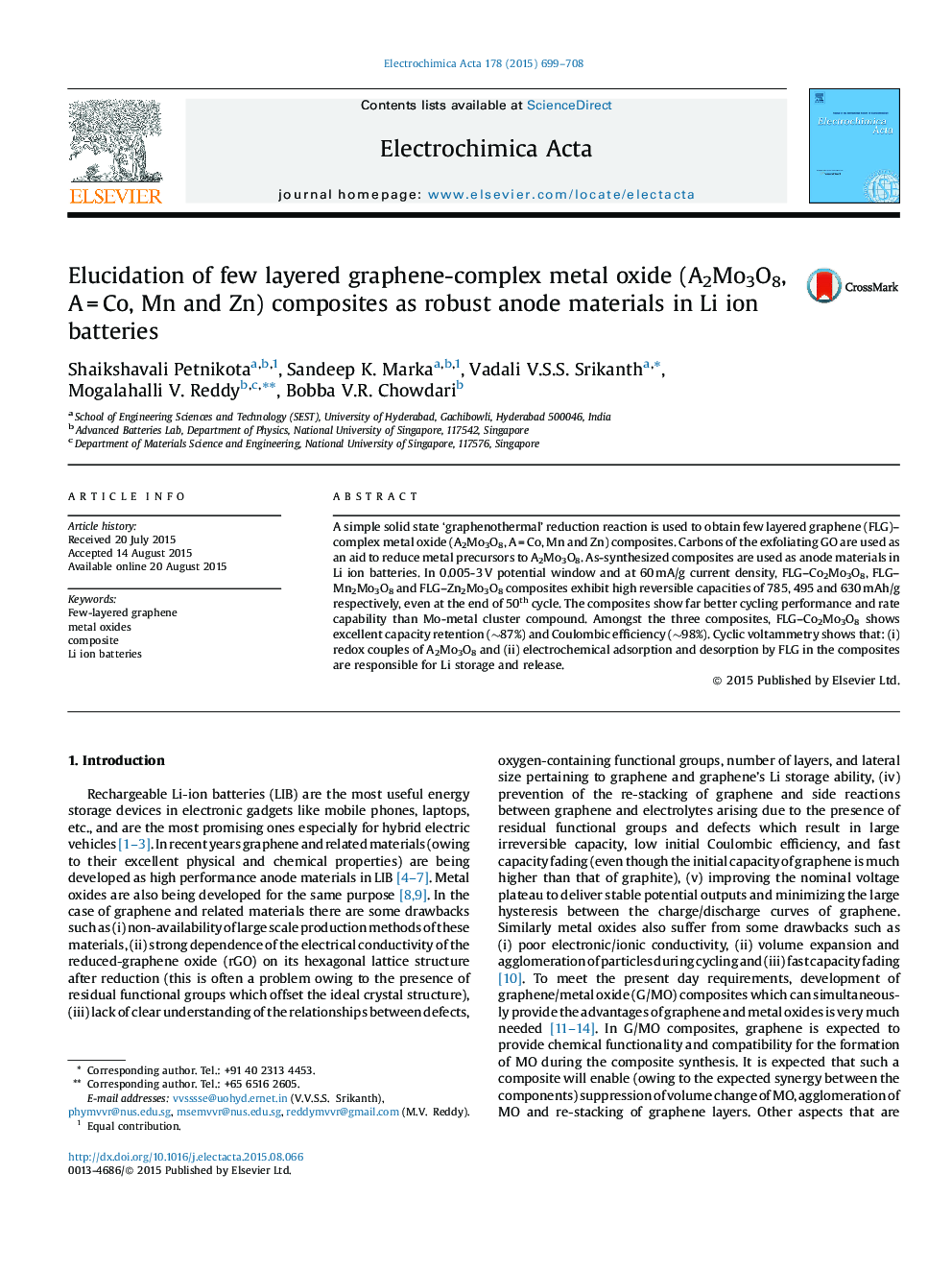| Article ID | Journal | Published Year | Pages | File Type |
|---|---|---|---|---|
| 183735 | Electrochimica Acta | 2015 | 10 Pages |
A simple solid state ‘graphenothermal’ reduction reaction is used to obtain few layered graphene (FLG)–complex metal oxide (A2Mo3O8, A = Co, Mn and Zn) composites. Carbons of the exfoliating GO are used as an aid to reduce metal precursors to A2Mo3O8. As-synthesized composites are used as anode materials in Li ion batteries. In 0.005-3 V potential window and at 60 mA/g current density, FLG–Co2Mo3O8, FLG–Mn2Mo3O8 and FLG–Zn2Mo3O8 composites exhibit high reversible capacities of 785, 495 and 630 mAh/g respectively, even at the end of 50th cycle. The composites show far better cycling performance and rate capability than Mo-metal cluster compound. Amongst the three composites, FLG–Co2Mo3O8 shows excellent capacity retention (∼87%) and Coulombic efficiency (∼98%). Cyclic voltammetry shows that: (i) redox couples of A2Mo3O8 and (ii) electrochemical adsorption and desorption by FLG in the composites are responsible for Li storage and release.
